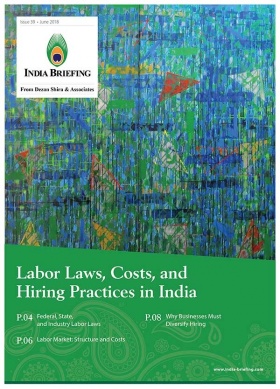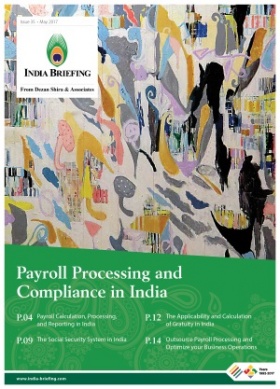Employees’ State Insurance – A Social Security Scheme in India
The Employees’ State Insurance (ESI) scheme under the ESI, Act, 1948 provides social security coverage to workers employed in various factories and establishments, and covers contingencies such as sickness, maternity leave, and physical disablement or death due to employment injury resulting in loss of wages or earning capacity.
The ESI Act stipulates the rules and regulations that govern the functioning of the Employees’ State Insurance Corporation (ESIC), which in turn manages the ESI fund.
The law requires every company, factory, or establishment, employing more than 10 employees (20 in some states) with a salary up to Rs 21,000 (US$297) to register itself with the ESIC.
Documents required for ESIC registration
- Memorandum of association and articles of association of the company;
- Name of all the employees working in the company/factory;
- Certificate of registration obtained under the Factories Act, or Shops and Establishment Act;
- PAN card of the company and the employees working in the company;
- List of directors and shareholders of the company; and
- The compensation details of all the employees.
Employee-employer contribution rate under the ESI scheme
From February 15, 2019, the total contribution for a subscriber is 5 percent, which is split between the employer at 4 percent and the employee at 1 percent of their salary (basic plus allowances). The state government’s share in the ESI contribution is 1/8th and that by the federal government is 7/8th.
Maternity benefits available under the ESI scheme
The ESI scheme provides maternity benefits at the rate of full wage subject to an insured woman’s contribution for at least 80 days in the preceding two consecutive contribution periods. The scheme also offers confinement expense of Rs 5000 (US$70), if the confinement occurs at a place where necessary medical facilities under the ESI scheme are not available.
The benefits are available to insured women for up to a period of twenty-six weeks (extendable by one month on medical advice), of which not more than eight weeks shall precede the expected date of confinement.
For an insured woman having two or more surviving children, the scheme offers maternity benefits for a period of twelve weeks, of which not more than six weeks shall precede the expected date of confinement.
The definition of an ‘insured woman’ includes:
- A commissioning mother who as biological mother wishes to have a child and prefers to get embryo implanted in any other woman; or
- A woman who legally adopts a child of up to three months of age.
Women employee must note that those receiving wages during their maternity under the provisions of the ESI Act are not eligible to receive a similar benefit under the provisions of the Maternity Benefit Act, 1961, or any other enactment.
Other general benefits available under the ESI scheme
The ESI fund oversees the disbursal of medical and cash benefits to the registered employees and their family. In the case of employment-related disablement or death, the ESI Act provides for a disablement benefit and a family pension, respectively.
Outpatient medical facilities are available in 1,418 ESI dispensaries and through 1,678 private medical practitioners across the country. Inpatient medical care is available in 145 ESI hospitals and 42 hospital annexes (19,387 beds). In addition, several state government hospitals offer beds exclusively for the use of ESI beneficiaries. There are 830 ESI centers where ESI subscribers can avail of their cash benefits.
Other benefits include:
- Unemployment allowance to workers who face involuntary unemployment due to injury, or closure of factory or establishment;
- Sickness benefits at the rate of 70 percent (in the form of salary);
- Old age medical care expenses;
- Dependent benefits; and
- Physical aid.
About Us
India Briefing is produced by Dezan Shira & Associates. The firm assists foreign investors throughout Asia from offices across the world, including in Delhi and Mumbai. Readers may write india@dezshira.com for more support on doing business in India.
- Previous Article 印度所得税2019-2020年度计算器
- Next Article Should India be Your China Plus One?










